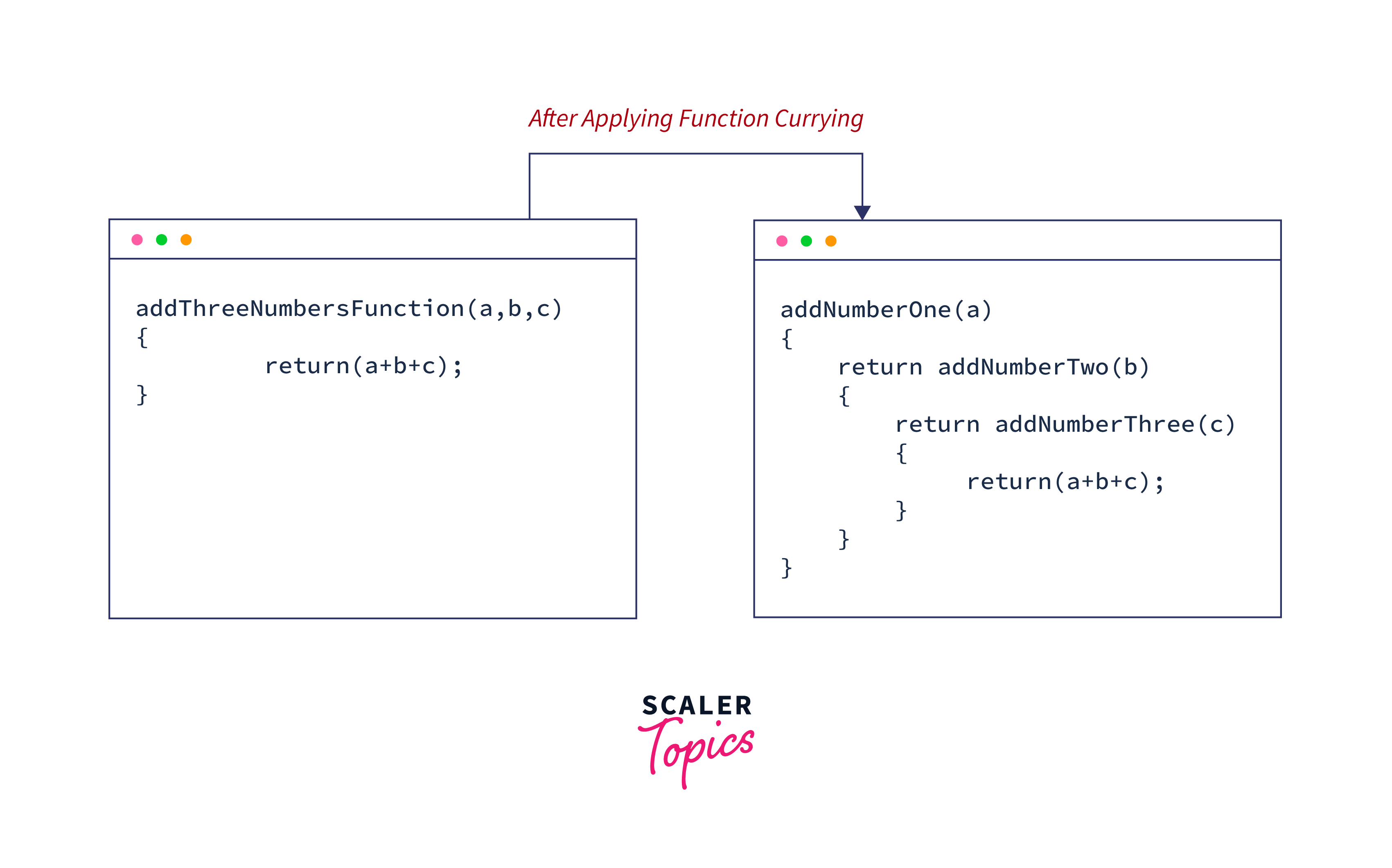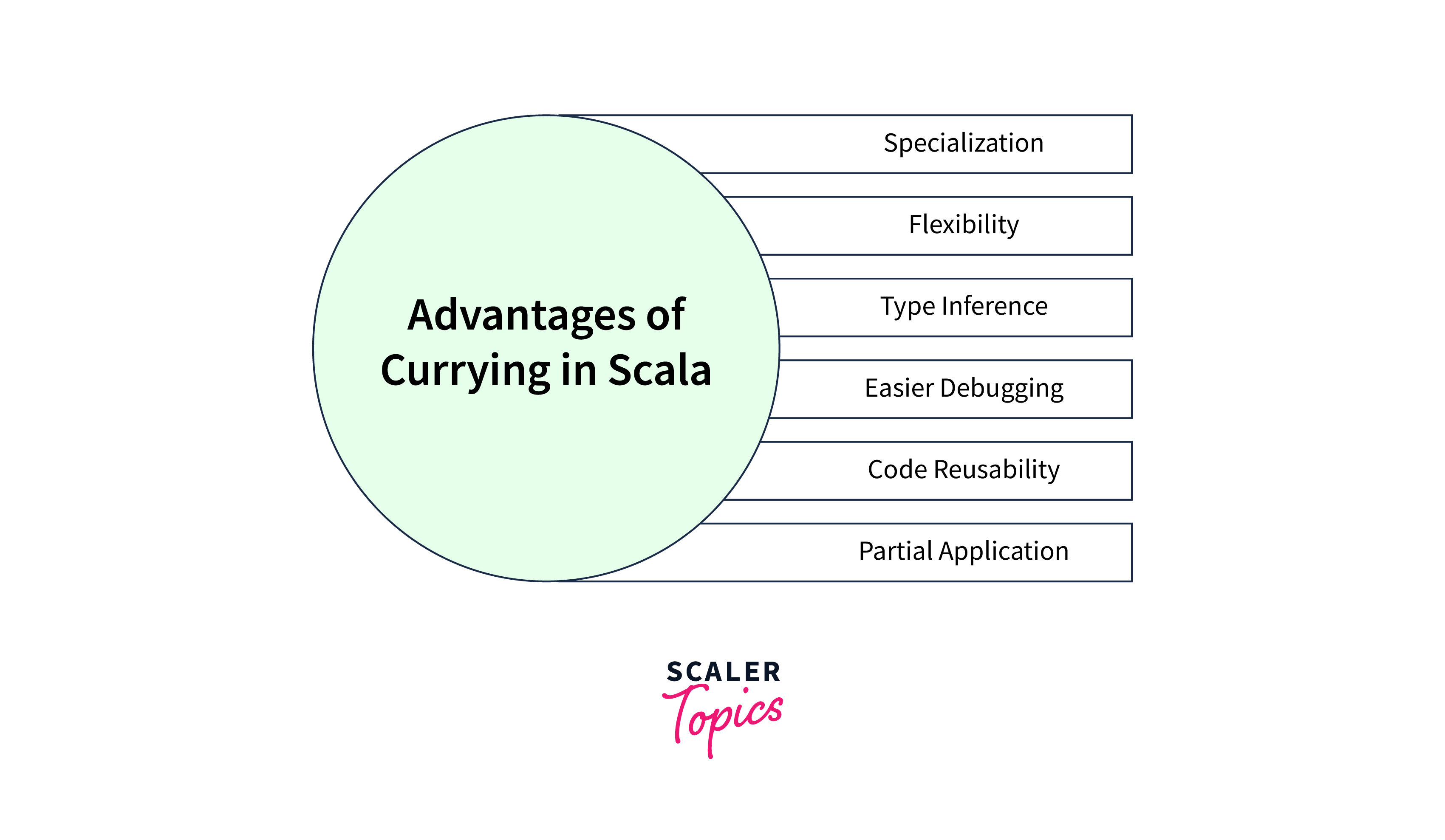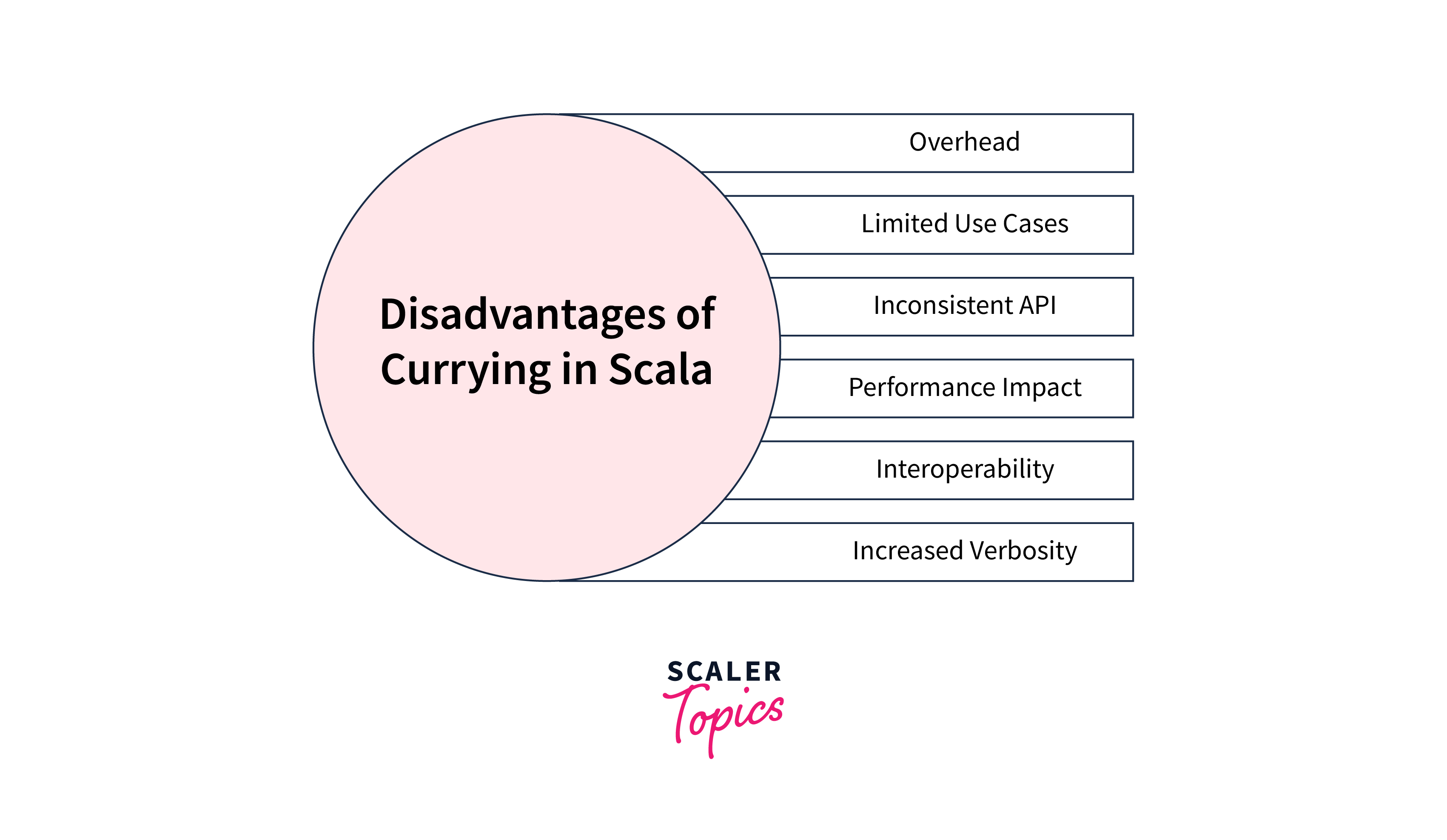Currying in Scala
Overview
Currying is a functional programming technique in which a function that takes multiple arguments is transformed into a series of functions, each taking a single argument. Scala, being a functional programming language, supports currying naturally. Currying can be useful for creating more flexible and reusable functions.
What is currying?
Currying in Scala is a functional programming technique where a function that takes multiple arguments is transformed into a sequence of functions, each taking a single argument. This enables partial application, where we can fix some arguments and obtain a new function that expects the remaining ones. Scala natively supports currying, making it a powerful tool for creating more modular and flexible code. Currying enhances code reusability, simplifies function composition, and allows developers to create specialized functions easily.

Syntax
In the above syntax:
- functionName is the name of the curried function.
- arg1, arg2, arg3, etc., are the arguments we want to currying, and Type1, Type2, Type3, etc., are their respective types.
- ReturnType is the return type of the function.
- The function body contains the logic we want to perform with these arguments.
To use a curried function, we can apply arguments one at a time, or we can partially apply it to create specialized functions:
We can also create a partially applied function directly, like this:
This allows us to create a new function with fewer arguments, which can be helpful for various use cases in functional programming.
Examples to convert normal function to curried function
Example 1: Converting a Sum Function
-
Original Sum Function:
This is a standard function that takes two integer arguments, x and y, and returns their sum.
-
Curried Sum Function:
In this transformed function, we split the parameters into two argument lists. The first list (x: Int) takes an integer x, and the second list (y: Int) takes another integer y. The result remains the same: it calculates the sum of the two integers.
-
Using the Curried Function:
To use the curried function, we can partially apply it by providing the first argument, like addCurried(5) _. This creates a new function that expects the second argument. When we apply the second argument, as in partiallyApplied(3), it calculates the sum, resulting in 8.
Example 2: Converting a Power Function
-
Original Power Function:
This function calculates the result of raising a base to the power of an exponent.
-
Curried Power Function:
In the curried version, the parameters are split into two argument lists, making it possible to calculate powers by partially applying the base and exponent values.
-
Using the Curried Function: We can create specialized power functions, such as square and cube, by partially applying the powerCurried function. This allows us to easily calculate squares and cubes of numbers by providing just the base value, and the function becomes reusable for various exponent values.
Advantages and Disadvantages of currying a function
Advantages

Currying a function offers several advantages, making it a valuable technique in functional programming and functional languages like Scala. Here are some of the key benefits of currying:
-
Partial Application: Currying allows us to partially apply a function by fixing some of its arguments. This creates a new function that expects the remaining arguments. It provides greater flexibility and modularity in function usage.
-
Specialization: Currying enables the creation of specialized functions by partially applying specific arguments. This makes it easy to create functions tailored for specific use cases without rewriting the entire function.
-
Code Reusability: Curried functions are highly reusable. By creating functions that expect one argument at a time, we can use them in various contexts and with different arguments, reducing code duplication.
-
Function Composition: Currying simplifies function composition. Composing functions becomes more natural when each function takes one argument, as we can easily chain them together.
-
Type Inference: In statically typed languages like Scala, currying can help the type inference system infer types more accurately. This can lead to better type safety and more helpful error messages.
-
Curry-First, Apply-Last Principle: Currying adheres to the "curry-first, apply-last" principle, which can make code more intuitive and predictable, as we build up complex behavior by composing simpler building blocks.
Disadvantages

While currying offers various advantages in functional programming, it's essential to be aware of potential disadvantages and limitations:
-
Complexity for Beginners: Currying can be confusing for developers new to functional programming or for those who are not familiar with the concept. It introduces an additional layer of complexity in understanding how functions are defined and applied.
-
Overhead: Currying may introduce some overhead in terms of memory and processing, as each partially applied function creates a new function object. While this overhead is typically minimal, it can add up if we create many partially applied functions.
-
Increased Verbosity: Currying can lead to increased verbosity in code, especially when defining or calling functions with multiple argument lists. This can make code harder to read and write for simple functions.
-
Limited Use Cases: Currying is not always the best choice for all functions. For functions with a fixed number of arguments, especially those that do not require partial application, currying can add unnecessary complexity.
-
Performance Impact: In some cases, the creation of numerous function objects when partially applying a curried function can impact performance. While this is usually negligible, it can be a concern in performance-critical applications.
-
Complex Debugging: Debugging curried functions can be more challenging because of the multiple layers of functions created during partial application. Understanding which part of the function is causing an issue may require extra effort.
Conclusion
- Currying in Scala is a technique where a function with multiple arguments is transformed into a series of functions, each accepting a single argument, allowing for partial function application.
- To convert a normal function to a currying function in Scala, split the parameters into multiple argument lists within the function definition, creating a chain of single-argument functions.
- Curried functions are easier to compose, facilitating the creation of complex behaviors from simpler building blocks and promotes reusable and specialized functions, improving code organization.
- Overusing currying can lead to code complexity and verbosity, especially for simple functions, potentially hindering code comprehension.
